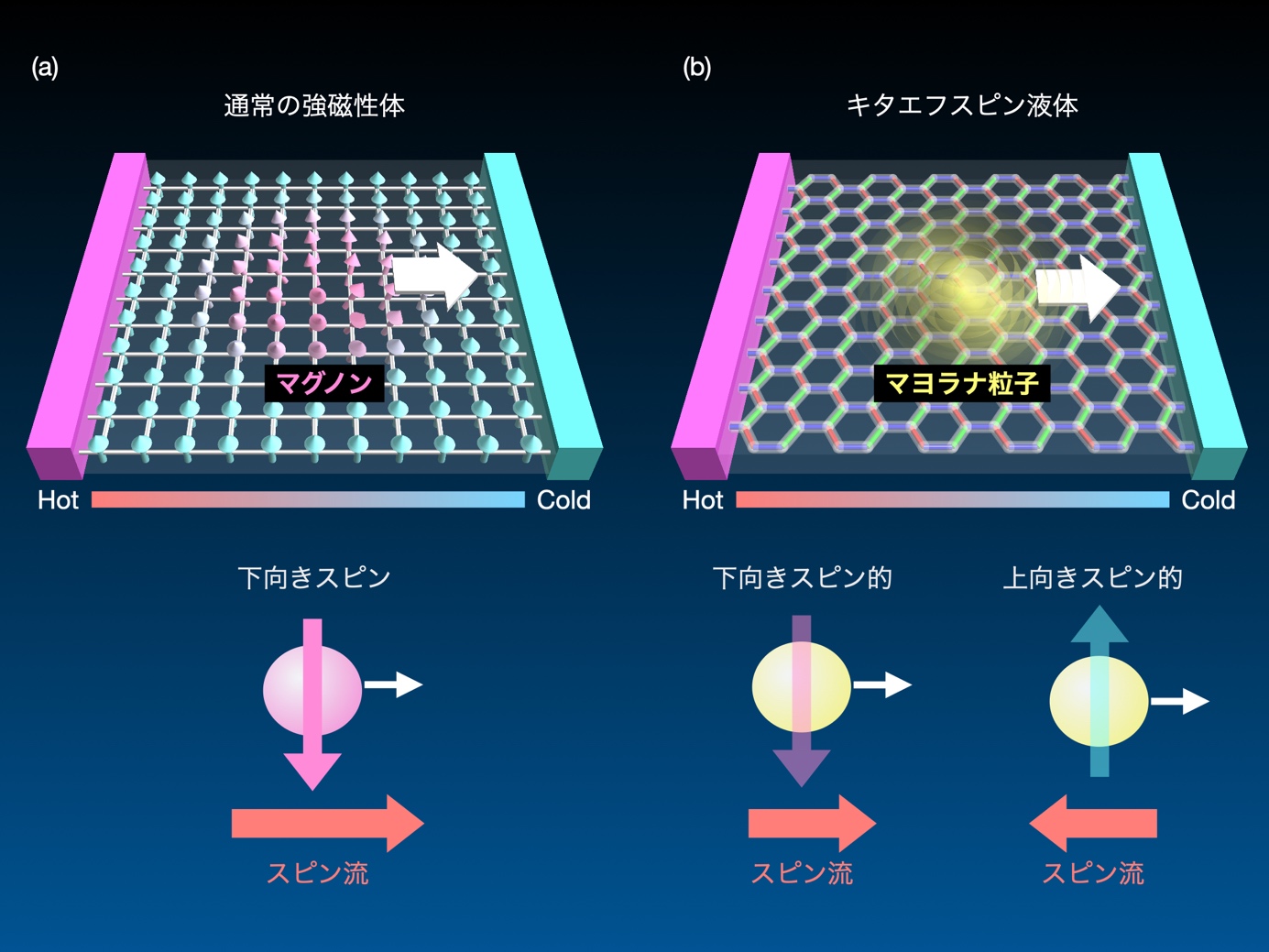DATE2025.03.06 #Press Releases
Spintronics Captures the Phantom Majorana Particle
Summary
A promising approach to addressing the challenge of achieving fault tolerance in current quantum computers involves utilizing special particles called Majorana particles, which emerge in certain materials. However, unlike electrons, Majorana particles do not carry an electric charge, making electrical manipulation difficult, and a definitive control method has yet to be discovered.
A research group led by Associate Professor Yasuyuki Kato from the Graduate School of Engineering at the University of Fukui, Associate Professor Joji Nasu from the Graduate School of Science at Tohoku University, Professor Masahiro Sato from the Graduate School of Science at Chiba University, Project Associate Professor Tsuyoshi Okubo from School of Science at the The University of Tokyo, Project Associate Professor Takahiro Misawa from the Institute for Solid State Physics at the University of Tokyo, and Professor Yukitoshi Motome from the Graduate School of Engineering at the University of Tokyo has theoretically proposed a novel method for detecting Majorana particles appearing in a quantum spin liquid (QSL) state. Their approach utilizes the spin Seebeck effect (SSE), a phenomenon commonly employed in spintronics, in which a temperature gradient induces a spin current. They discovered that the magnetic field and temperature dependence of the spin current generated by this effect exhibits characteristic behavior unique to Majorana particles.
These findings not only demonstrate the potential of spintronics-based Majorana particle detection but also suggest the possibility of controlling Majorana particles via spin currents. This research is expected to contribute to the realization of practical quantum computing.
The results of this study were published in the international scientific journal Physical Review X on March 6 at 12:00 AM (Japan Time).
 Figure: Spin Seebeck Effect. In a conventional ferromagnet, a thermal gradient induces a spin current as magnons flow from the high-temperature region to the low-temperature region, as indicated by the white arrows (a). It has been discovered that Majorana particles emerging in a Kitaev quantum spin liquid can also generate a spin current by flowing from the high-temperature region to the low-temperature region, despite lacking spin angular momentum (b). Magnons possess a downward spin and contribute to the spin current. On the other hand, Majorana particles acquire either an upward or downward spin-like property depending on the sign of the interaction coefficients between spins, which in turn affects the direction of the spin current.
Figure: Spin Seebeck Effect. In a conventional ferromagnet, a thermal gradient induces a spin current as magnons flow from the high-temperature region to the low-temperature region, as indicated by the white arrows (a). It has been discovered that Majorana particles emerging in a Kitaev quantum spin liquid can also generate a spin current by flowing from the high-temperature region to the low-temperature region, despite lacking spin angular momentum (b). Magnons possess a downward spin and contribute to the spin current. On the other hand, Majorana particles acquire either an upward or downward spin-like property depending on the sign of the interaction coefficients between spins, which in turn affects the direction of the spin current.
Project Associate Professor Tsuyoshi Okubo from Institute for Physics of Intelligence participated in this research.
Related links: University of FUKUI, Tohoku University, CHIBA University, School of Engineering, The UTokyo, The Institute for Solid State Physics (ISSP), The UTokyo, Japan Science and Technology Agency (JST).
Published Journals
-
Journal name Physical Review XTitle of paper


